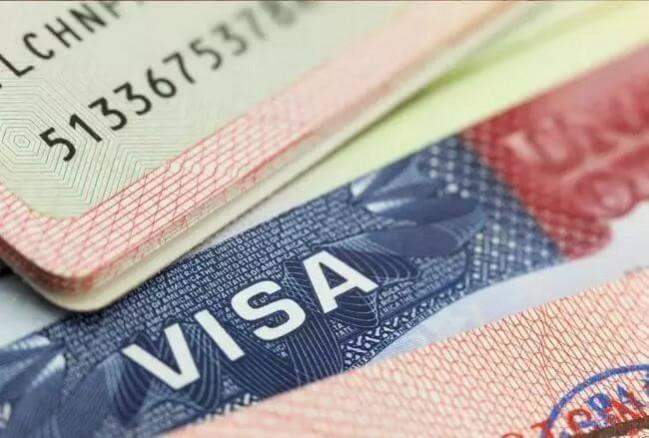In what came as a major relief to millions of Non-Resident Indians waiting to visit India to see their friends and family after almost two years, the Indian government this week reopened its borders to foreign tourism. Putting an end to the 20-month long clampdown due to the COVID-19 pandemic, the Indian government decided to issue fresh tourist visas to foreigners intending to come to India and said that it would be issuing the first five lakh foreign tourist visas free of cost.
Confusing communication; many passengers suffer
But the new visa norms triggered confusion and inconvenience for NRIs, who already had valid multi-year multiple entry visas. The advisory, however, had stated that all existing valid e-Tourist Visa/regular paper Tourist Visa issued before Oct 6, 2021, will continue to remain suspended and travel on such visas will not be permitted. This meant, travellers would need to get a fresh tourist visa, which will be for single entry with 30-day validity.
![Restore existing visas over issuing new ones; Indian govt urged to make travel hassle-free [details]](https://data1.ibtimes.co.in/en/full/767351/restore-existing-visas-over-issuing-new-ones-indian-govt-urged-make-travel-hassle-free-details.jpg?h=450&l=50&t=40)
In the US, this communique triggered chaos and disappointment. In one particular incident, a wheelchair-bound woman who was travelling to India was not allowed to board her flight. Reason: The senior citizen, did not have a fresh single-entry tourist visa. The woman had renewed her tourist visa only in 2019, hoping to travel hassle-free till 2029, without realising the new visa norms wouldn't allow that.
Owing to the prevailing situation, New York-based social activist Prem Bhandari has taken up the cause of NRIs intending to visit India after waiting for almost two years.
"Even though the travel is now open, the first batch of visitors to India are not travelling to see the Taj Mahal or the Qutub Minar. Those travelling now are essentially people who want to meet their parents, families, friends whom they have not seen in nearly two years because of the pandemic," Bhandari said.
Bhandari, who is the chairman of Jaipur Foot USA, has urged the Indian government to restore the multiple-entry tourist visas soon to ensure ease of travel for all those waiting to meet their loved ones in India. By restoring existing visas, NRIs won't have to go through the additional burden of applying for new visas.
In order to monitor the stay period of the foreign tourists, he said that the authorities can stamp their visas for a limited time period when they reach India, which will also lessen the burden on the authorities. "This will be much more convenient and hassle-free than the new rules requiring tourists to re-apply for the single entry 30-day visa," Bhandari suggests.
![Restore existing visas over issuing new ones; Indian govt urged to make travel hassle-free Restore existing visas over issuing new ones; Indian govt urged to make travel hassle-free [details]](https://data1.ibtimes.co.in/en/full/767352/restore-existing-visas-over-issuing-new-ones-indian-govt-urged-make-travel-hassle-free-details.jpg?h=450&l=50&t=40)
Bhandari also pointed out when tourists face last-minute changes to their travel plans will need to bear the burden of alternate logistics arrangements in addition to the disappointment of not being able to see their loved ones.
Foreign and Home Secretary Have always Been people's bureaucrats
Speaking about how the Foreign Ministry under Prime Minister Modi is a blessing for NRIs he said:
We must also not be amiss in appreciating the MEA under the current Modi Govt. The reforms brought in by the PM have hugely benefited people of Indian Origin across the world. Being a social activist, I've seen how even at the Union Secretary level officers are more responsive and forthcoming to extend genuine help when sought. In my personal experience, I've seen too officers like India's Foreign Secretary H.V Shringla, Home Secretary Ajay K. Bhalla and Pradeep Singh Kharola, retired Civil Aviation Secretary are available 24x7 for the public. It's heartening. Although, one may not be able to say the same about bureaucracy in various states of India where junior-collector-level officers also still live and act like in the British Era."
About the T-Visas and Consulates in US
Bhandari further pointed out that only one or two consulates are easily/openly accessible for NRIs in the United States, which has left people confused, especially the senior citizens, who were not clear on getting the new single-entry visa to visit India.

Bhandari said he took up their issues and interacted with various departments and governments to get their issues resolved, which gave him the impression that there's a huge change in the way the authorities at different levels work.
"This is the new India. I see the change in central government," he concluded.









!['Had denied Housefull franchise as they wanted me to wear a bikini': Tia Bajpai on turning down bold scripts [Exclusive]](https://data1.ibtimes.co.in/en/full/806605/had-denied-housefull-franchise-they-wanted-me-wear-bikini-tia-bajpai-turning-down-bold.png?w=220&h=138)



